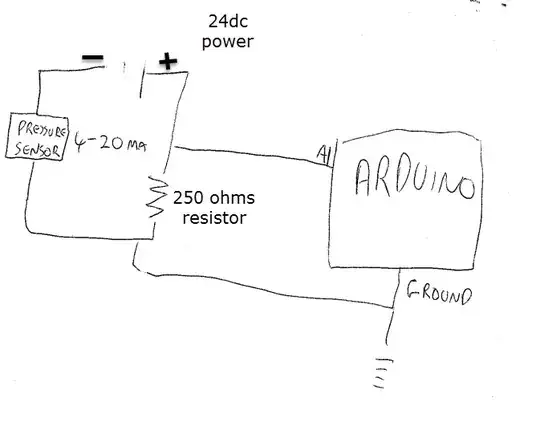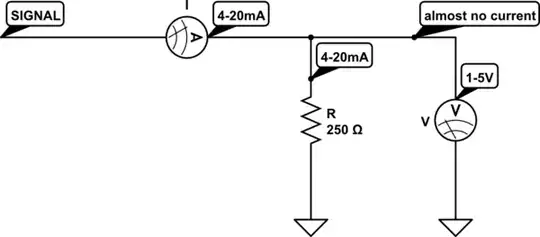I have a OsiSense™ XMLP pressure sensor that I want to read from my Arduino uno. This is the circuit I am looking at building for measure 4 to 20 milliamp.

I've read online to find out how to build the circuit. Can you tell me if it is correct?
Also I dont understand why it works and I'm hoping you can correct my thinking. Following ohms law we want to leave 5v when 20 milliamps goes through the circuit. We know the voltage on the circuit is a constant 24 volts (short cable runs) and we know the maximum current is 20 milliamps so my maths says :
Resistance = Voltage / I (current)
We need to leave 5 volts for the Arduino to read when the sensor is at maximum pressure so we subtract 5 from 24.
Resistance = 19 / 20 milliamp
So the resistor to select to give us a maximum of 5 volts is a 0.95 Kilohms resistor. I dont see where the 250 ohm resistor comes in? please help.

